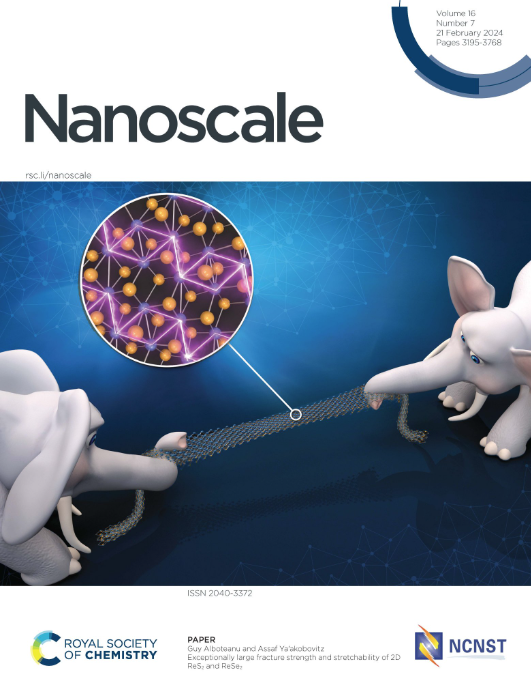Co3O4(111)负载的多功能Pd-Rh电催化剂在碱性环境下的稳定性:电子金属-负载相互作用的影响
IF 5.8
3区 材料科学
Q1 CHEMISTRY, MULTIDISCIPLINARY
引用次数: 0
摘要
研究了在Ir(100)上生长的Co3O4(111)薄膜上负载的单金属Rh和Pd纳米粒子和双金属Pd - Rh核壳纳米粒子在碱性电解质中的氧化态和溶解性,以及与乙醇电化学氧化相关的条件。为此,利用同步辐射光电子能谱与非原位重现电化学电池(EC-SRPES)和扫描隧道显微镜(STM)对模型系统进行了表征。我们发现电子金属-载体相互作用(EMSI)对Rh的氧化态有很强的影响,导致氧化后的Rh3+在Co3O4表面发生强烈的氧化和锚定(111)。因此,无论电势范围如何,EMSI都可以防止Rh溶解到电解质中。而在0.3 ~ 1.1 VRHE电位范围内,对Pd的氧化态和溶解没有影响。然而,当电位范围扩大到0.3-1.5 VRHE时,由于Pd的可逆氧化/还原,Pd的溶解更强,EMSI的存在增强了Pd的溶解。最重要的是,EMSI的大小以及贵金属氧化的程度可以通过双金属Pd-Rh核壳纳米颗粒中金属/Co3O4(111)界面的性质来有效控制。本文章由计算机程序翻译,如有差异,请以英文原文为准。
Stability of multifunctional Pd‒Rh electrocatalysts supported on Co3O4(111) in alkaline environment: Impact of the electronic metal‒support interaction
The stabilities of monometallic Rh and Pd nanoparticles and bimetallic Pd–Rh core–shell nanoparticles supported on Co3O4(111) thin films grown on Ir(100) were investigated with respect to the oxidation state and dissolution in alkaline electrolyte under the conditions relevant for electrochemical ethanol oxidation. Towards this aim, the well-defined model systems were characterized by means of synchrotron radiation photoelectron spectroscopy coupled with an ex situ emersion electrochemical cell (EC-SRPES) and scanning tunneling microscopy (STM). We found that the electronic metal–support interaction (EMSI) has a strong influence on the oxidation state of Rh, resulting in a strong oxidation and anchoring of the oxidized Rh3+ species on the surface of Co3O4(111). Consequently, the EMSI prevents the dissolution of Rh into the electrolyte regardless of the potential range. In contrast, it has no effect on the oxidation state and dissolution of Pd in the potential range of 0.3–1.1 VRHE. However, extending the potential range to 0.3–1.5 VRHE results in a stronger dissolution of Pd due to the reversible oxidation/reduction of Pd, which is enhanced in the presence of the EMSI. Most importantly, the magnitude of the EMSI and, thus, the extent of noble metal oxidation, can be effectively controlled by the nature of the metal/Co3O4(111) interface in the bimetallic Pd–Rh core–shell nanoparticles.
求助全文
通过发布文献求助,成功后即可免费获取论文全文。
去求助
来源期刊

Nanoscale
CHEMISTRY, MULTIDISCIPLINARY-NANOSCIENCE & NANOTECHNOLOGY
CiteScore
12.10
自引率
3.00%
发文量
1628
审稿时长
1.6 months
期刊介绍:
Nanoscale is a high-impact international journal, publishing high-quality research across nanoscience and nanotechnology. Nanoscale publishes a full mix of research articles on experimental and theoretical work, including reviews, communications, and full papers.Highly interdisciplinary, this journal appeals to scientists, researchers and professionals interested in nanoscience and nanotechnology, quantum materials and quantum technology, including the areas of physics, chemistry, biology, medicine, materials, energy/environment, information technology, detection science, healthcare and drug discovery, and electronics.
 求助内容:
求助内容: 应助结果提醒方式:
应助结果提醒方式:


